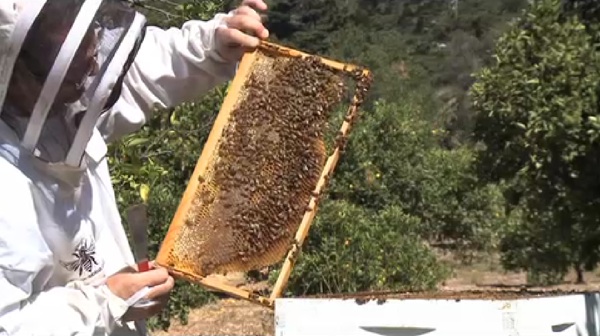‘Neonic’ Poison Found Throughout City
Creeks Division Testing After Rains Discovers Insecticide Fatal to Bees

A grave concern is growing over the use of neonicotinoids, a type of insecticide known to affect the central nervous system of invertebrates, most alarmingly of bees. In its first tests for the poison, the city’s Creeks Division found a “neonic” known as imidacloprid after the rains of February 2014, according to city creek reports. In fact, the monitors found the pesticide so consistently across their four creek sites (Arroyo Burro, Mission, Laguna, and Sycamore) that they suspected laboratory problems. Until this year. In 2015, post-storm tests again found imidacloprid in the city’s four major streams and also in spot checks of urban sidewalks and streets.
Neonics form the lethal ingredient in more than 400 U.S. products, according to the National Pesticide Information Center, including flea and tick treatments, and all-in-one lawn and plant products. After the European Union restricted the use of three neonicotinoids (clothianidin, imidacloprid, and thiametoxam) in 2013 because of the poisons’ high risk to bees, concerns have risen worldwide. This type of insecticide poses a risk to birds, mammals, aquatic organisms, and soil-dwelling organisms as well, the European Food Safety Authority (EFSA) stated in a 2013 press release, though it was the honey bees’ importance to the human food chain that triggered the ban. Mammal study results published the year before had the EFSA suggesting that acceptable exposure levels for humans should be lowered until more research is carried out; the early results showed that imidacloprid and acetamiprid — another poison containing a neonicotinoid — had the potential to damage the central nervous systems of humans.
For its part, the Environmental Protection Agency agrees with the European findings on potential acute effects and uncertainty on chronic risk, but its pesticides website states EPA needs “risk management” information before it can regulate the pesticide for the bees’ sake. EPA’s actions fall way short of a ban: requiring improved labeling on pesticides containing imidacloprid, dinotefuran, clothianidin, and thiamethoxam to protect bees, and improved reporting of bee death incidents, among others.
In Santa Barbara, worries over a possible Huanglongbing infection in citrus groves by invasive Asian citrus psyllids prompted the county to spray parts of Summerland with imidacloprid last March. Many homeowners opted out because bee colony deaths were a competing concern.
In the wake of the recent rain and findings of the poison in creek water, the city advises using organic products and gardening techniques and taking care if rain runoff can wash a pesticide into a gutter or drain. The Creeks Division plans to continue testing during storms and is applying for a grant to study the poison’s effect on coastal creeks and estuaries.



